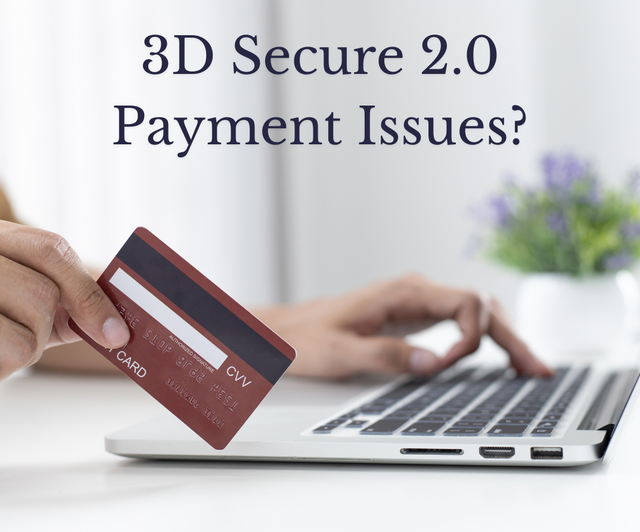Is Your eCommerce Store Experiencing Issues With 3D Secure 2.0?
As of 21st October 2022, the support for 3D Secure 1.0 has ended and secure payments must be using the 3D Secure 2.0 protocol moving forward. While it brings a wide range of positive changes, some merchants have reported a number of failed transactions due to payments being downgraded to 3D Secure 1.0.
If your eCommerce store is experiencing similar problems then read on and find out what you can do to tackle these issues.
What Is 3D Secure 2.0?
3D Secure 2.0 (3DS 2.0) is the latest update of the 3D Secure authentication protocol supported by all major credit card networks including Visa, Mastercard, American Express, Discover, JCB and UnionPay. It enhances the payment authentication process through risk-based authentication and the possibility of biometric authentication.
3DS 2.0 offers a range of improvements over the 1.0 version, from security to QoL changes. It has been introduced with two main goals in mind – to increase protection and decrease friction.
How Does the 3D Secure 2.0 Protocol Work?
To authenticate cardholder information, 3DS 1.0 requested the user to enter a password or PIN, often irritating customers to the point of quitting the purchase. 3DS 2.0 allows businesses and payment providers to send more information, such as the delivery address, email address or device ID, to the cardholder’s bank.
The bank then uses this information to assess the level of risk of the transaction. If the provided data is enough to authenticate that the real cardholder is making the purchase, the transaction goes through. If further proof is required, the customer is asked to provide additional information to authenticate the payment.
This means that for the majority of transactions, the occurrence of authentication challenges that disrupt the checkout process is greatly reduced. Fewer payment disruptions mean more convenience for the customers and improved website conversion rates from the eCommerce store perspective.
Additionally, 3DS 2.0 has introduced a mobile SDK component, allowing merchants to integrate the 3DS protocol into their mobile apps and greatly improve the mobile checkout experience.
What Are Some Of the Issues Merchants Experience With the 3D Secure 2.0 Protocol?
As of 21st October, secure payments must be using the 3DS 2.0 protocol. Since the switch, some merchants have reported a number of payments being downgraded from 3DS 2.0 to 3DS 1.0. One of the reasons why this issue can occur is that the merchant satisfies the rules of 3DS 1.0 but not those of 3DS 2.0. The transaction is then downgraded resulting in full authentication of the cardholder, but can also result in a failed transaction.
What Should I Do If My eCommerce Store Experiences Issues With 3D Secure 2.0?
If your eCommerce website experiences a higher number of failed transactions after upgrading to 3DS 2.0 you should get in touch with your payment provider. For most payment providers, the admin panel available to merchants does not explicitly say a transaction has failed due to being downgraded. It’s best to reach out to the payment provider directly and ask them for a report listing the number of payments from when 3DS 2.0 was introduced to your store that are failing due to being downgraded.
Should you discover that the number of transactions failing due to 3DS 2.0 being downgraded is significant, we suggest you look at upgrading the SDK in your payment module.
If you require more help with the 3D Secure 2.0 protocol then get in touch with us today at hello@medialounge.co.uk and we’ll be happy to assist you.


